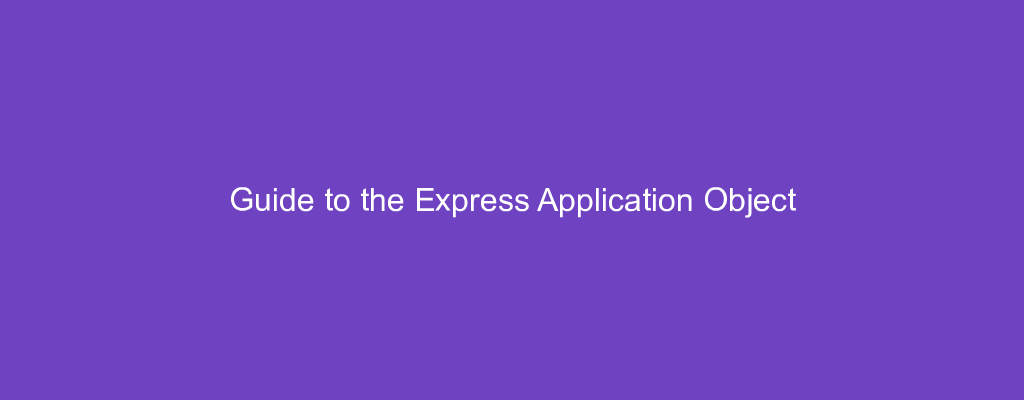The core part of an Express app is the Application object. It’s the application itself.
In this piece, we’ll look at the methods of the app object and what we can do with it.
app.METHOD(path, callback [, callback …])
This method routes an HTTP request. METHOD is a placeholder for various routing methods that Express supports.
It takes the following arguments:
path— It can be a string or regex representing paths or patterns of paths. The default is/.callback— a function to handle requests. It can be a middleware function, a series of them, array of them, or a combination of all of the above.
The following routing methods are supported by Express:
checkoutcopydeletegetheadlockmergemkactivitymkcolmovem-searchnotifyoptionspatchpostpurgeputreportsearchsubscribetraceunlockunsubscribe
All methods take the same arguments and work exactly the same way. So app.get and app.unlock are the same.
app.param([name], callback)
app.param adds callback triggers for route parameters. name is the parameter or an array of them. callback is a callback function.
The parameters of the callback are the request object, response object, next middleware function, the value of the parameter, and the name of the parameter in the given order.
For example, we can use it as follows:
The code above will get the id URL parameter when it exists with the app.param callback.
Then in the callback, we get id to req.id and call next to call our route handler in app.get.
Then we call res.send(req.id); to send the response with req.id, which we set earlier.
Note that id in app.param has to match :id with the route handlers.
We can pass in an array of parameters that we want to watch for:
Then if we make a request for /1/foo, we’ll get 1 and foo one at a time as the value of the value parameter.
app.path()
app.path returns the path of mounted apps as a string.
For example, we can use it as follows:
Then we get '' for app.path(), '/foo' for foo.path(), and '/foo/bar' for bar.path() since we mounted foo to app and bar to foo.
app.post(path, callback [, callback …])
We can use the app.post method to handle POST requests with the given path by passing in a callback route handler.
It takes the following arguments:
path— It can be a string or regex representing paths or patterns of paths. The default is/.callback— a function to handle requests. It can be a middleware function, a series of them, array of them, or a combination of all of the above.
For example, we can use it as follows:
Then when we make a POST request with a client like Postman, we should see “POST request made.”
app.put(path, callback [, callback …])
We can use the app.put method to handle PUT requests with the given path by passing in a callback route handler.
It takes the following arguments:
path— It can be a string or regex representing paths or patterns of paths. The default is/.callback— a function to handle requests. It can be a middleware function, a series of them, array of them, or a combination of all of the above.
For example, we can use it as follows:
Then when we make a PUT request with a client like Postman, we should see “PUT request made.”
Conclusion
We can intercept the parameters sent from requests with the app.params method.
To listen to POST requests, we can use the app.post method. To listen to PUT requests, we can use the app.put method.
app.path lets us get the path of mounted apps.
app also has a long list of methods for listening to all kinds of requests.

